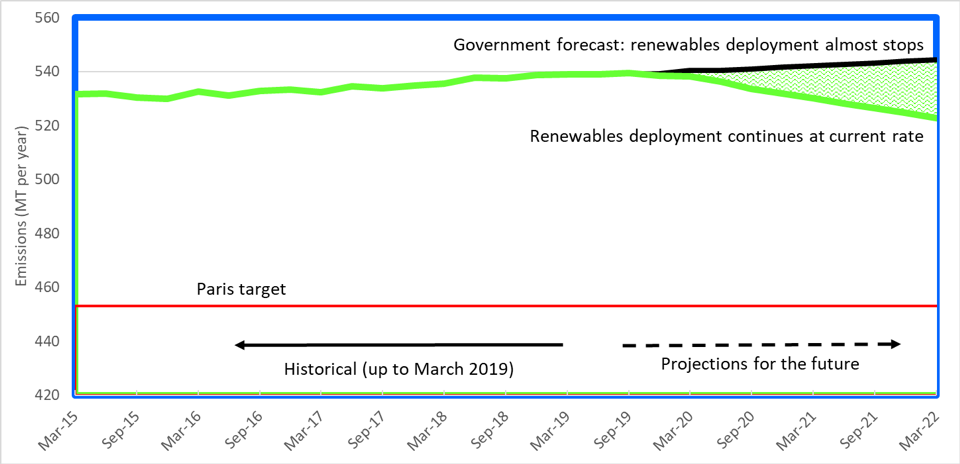Professor Andrew Blakers and Dr Matthew Stocks have released a new report demonstrating that Australia’s carbon emissions will decline by up to four per cent over the next few years – but further reductions will require government support.
A summary of the policy points are listed below:
- Australia’s greenhouse gas emissions are peaking at about 540 Megatonnes (MT) of CO2-equivalent per year (Figure 1). After a brief plateau, we expect that they will decline by 3-4% over 2020-2022, and perhaps much more in the following years.
- The reason is that Australia’s world-leading per-capita rate of deployment of solar and wind energy is displacing fossil fuel combustion.
- Deployment of solar and wind energy is the cheapest way to make deep cuts in emissions because of their low and continually falling cost. Solar and wind are reducing electricity prices.
- Declining emissions throughout the 2020s depends upon Government, particularly the Federal Government, to facilitate construction of adequate electricity transmission and storage to allow continued rapid deployment of solar and wind. Without this, emissions may rise again.
- Continued deployment of solar and wind at current rates allows Australia to meet its Paris emissions target at low or zero net cost without using past Kyoto accounting credits.
- Higher deployment rates of solar and wind would yield deeper cuts in emissions but requires supportive Government policy including adequate transmission and storage.
The report can be found here, and the press release downloaded here.
The figure above shows historical and projected total Australian emissions in Megatonnes of CO2 (equivalent) per year. Black line: Government emissions projections, which assume that deployment of solar and wind almost stops. Green line: solar and wind deployment continues at the current rate.
